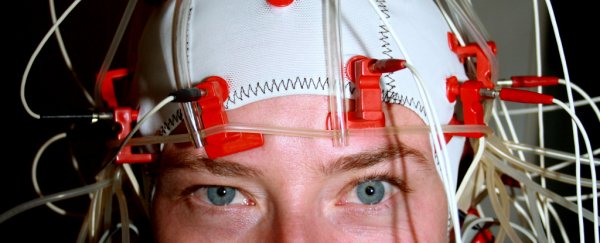A researcher in US thinks he might have finally found evidence of humanity's sixth sense - the ability to detect, in some subconscious way, Earth's magnetic field.
The ability to sense Earth's magnetic field has been confirmed in birds, insects, and some mammals, which they use to migrate and orient themselves with the world around them, and now geophysicist Joe Kirschvink from the California Institute of Technology says he's identified it in humans for the first time.
Best of all, Kirschvink claims his results can be repeated and verified - something that previous experiments hinting at our magnetic sense - or magnetoreception - have failed to do.
"My talk went really well," Kirschvink told Eric Hand from Science magazine after presenting his results in April at the 2016 meeting of the Royal Institute of Navigation in the UK. "Nailed it. Humans have functioning magnetoreceptors."
To be clear, Kirschvink has so far only presented the results of a very small trial involving 24 participants, and he's still in the process of writing up the paper, so nothing has been peer-reviewed as yet.
That means we're taking his word for the conclusions for now, but he's just received US$900,000 in funding, and is working with labs in Japan and New Zealand to help confirm them. While claims of human magnetoreception have been debunked before, experts think this might be the real deal.
"Joe's a very smart man and a very careful experimenter," physical chemist Peter Hore from the University of Oxford - a leader in the magnetoreception field who wasn't involved in this research - told Hand. "He wouldn't have talked about this at [this meeting] if he wasn't pretty convinced he was right. And you can't say that about every scientist in this area."
So how would humans be able to detect a magnetic field that we can't see with our own eyes? We now know that it's not only birds and butterflies using the ability - mammals like dogs use Earth's magnetic field to help them poop along a north-south axis, and wood mice and mole rats build their nests along the magnetic field lines. But there are conflicting views on exactly how they do this.
There are two leading hypotheses to explain the underlying biological process of magnetoreception: one camp thinks that Earth's magnetic fields could trigger quantum reactions in proteins called cryptochromes. These proteins have been found in the retinas of birds, dogs, and even humans, but it's not year clear how they would feed magnetic information back to the brain.
Another hypothesis suggests that there are actually receptor cells in the body that contain very tiny 'compass needles' made of a magnetic iron mineral known as magnetite, which orient themselves according to Earth's magnetic fields. Magnetite has been found in cells inside bird beaks and the noses of trout, but, again, there's not sufficient evidence to fully explain the ability.
Kirschvink sits more in that second camp, but his real interest isn't in figuring out what's going on, but in showing that magnetoreception is actually happening in humans in the first place. The problem with previous experiments is that they've failed to be replicated - thought to be the result of electromagnetic interference messing with results.
To eliminate that variable, Kirschvink has built what's known as a Faraday cage - a thin, aluminium box that can screen out electromagnetic background noise using wire coils - two floors underground at Caltech. Inside the cage, people sit in the pitch black, and are only exposed to a pure magnetic field with no interference, and no other stimulus.
Kirschvink hooks these participants up to EEG monitors to map their brain activity, and then applies a rotating magnetic field, similar in strength to Earth's, to see if the brain shows any indications of picking up any changes.
He's been able to show that when the magnetic field is rotating counterclockwise, there's a drop in participants' alpha waves.
"The suppression of α waves, in the EEG world, is associated with brain processing: a set of neurons were firing in response to the magnetic field, the only changing variable," reports Hand for Science magazine.
But more than that, the neural response was actually delayed by a few hundred milliseconds, which Kirschvink says suggests an active brain response.
"A magnetic field can induce electric currents in the brain that could mimic an EEG signal - but they would show up immediately," explains Hand.
A similar response was also seen when the magnetic field twisted into the floor - but not when the magnetic field twists upwards or rotates clockwise, which could reflect the polarity of our internal magnetic compass, suggests Kirschvink.
There's a lot more work to be done - a team in Japan is now replicating the experiments, and a lab in New Zealand is beginning their own study following the same protocol. The results then need to be scrutinised by other researchers in the field and published in a peer review journal before we can get too excited.
We've got a long way to go, but it seems like we might be closer than ever before to showing that humans haven't totally lost touch with our sixth sense. And that's pretty exciting. "It's part of our evolutionary history," says Kirschvink. "Magnetoreception may be the primal sense."
